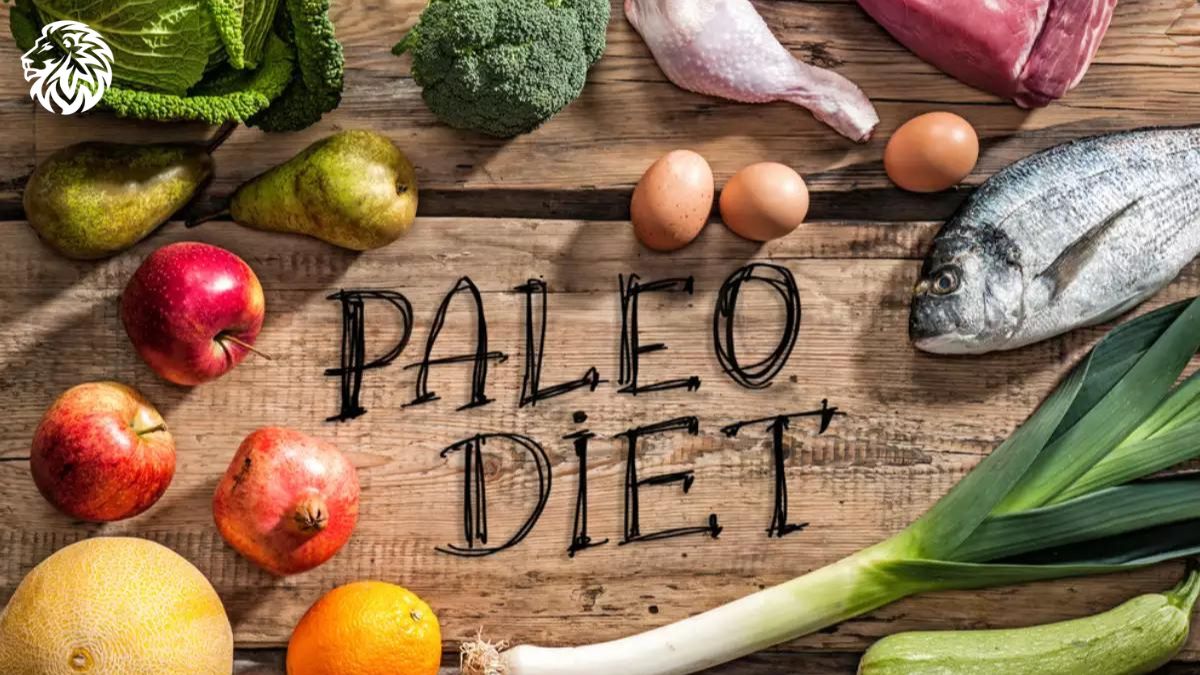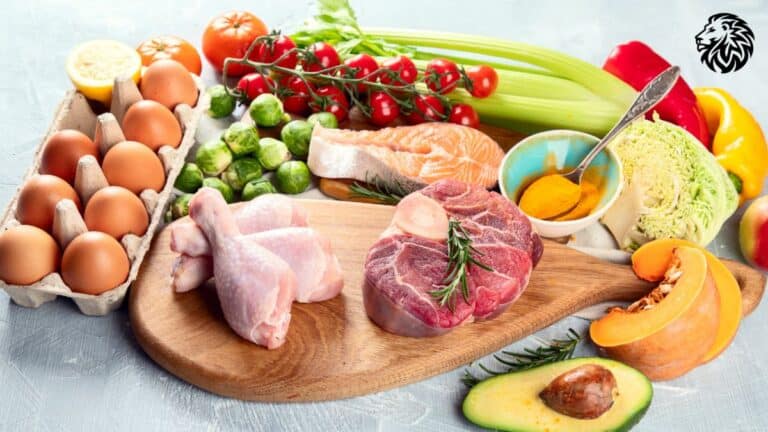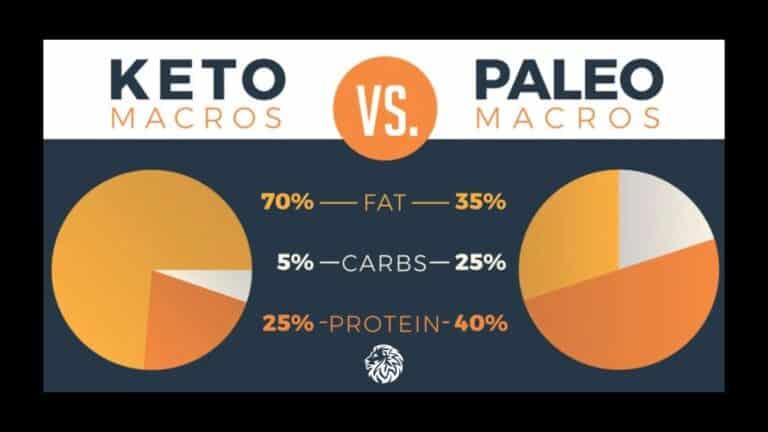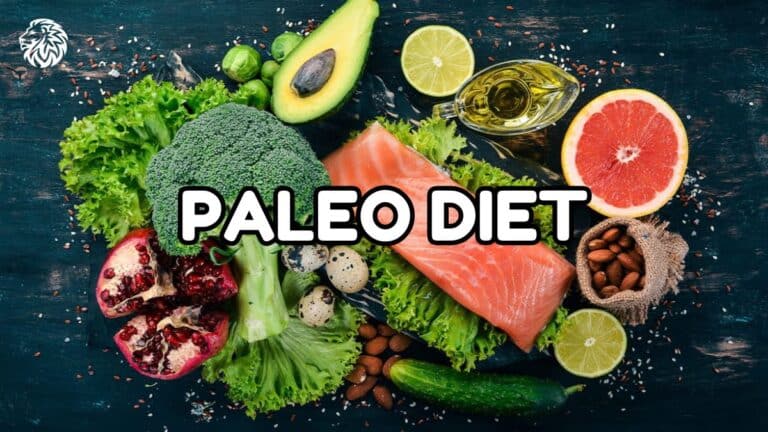The Paleo diet is like taking a culinary journey back to the times of our ancient ancestors, often thought of as cavemen, who lived during the Stone Age. Imagine living in a world where there were no farms, supermarkets, or processed foods. Instead, food came straight from nature – what they could hunt, fish, or find growing wild.
Many supporters of the Paleo diet feel that our bodies haven’t quite caught up to the fast-paced changes of modern agriculture. They think that some of the health problems we face today, like heart disease, diabetes, and obesity, might be because our bodies aren’t fully adapted to the foods common in our diets now.
Think of our ancient relatives as nature’s original foodies. They dined on fresh meats, fish, fruits, veggies, nuts, and seeds. They didn’t munch on bread, beans, milk, or any of the processed stuff we often find on our plates today.
The essence of the Paleo diet isn’t just about copying exactly what cavemen ate, but rather embracing the spirit of their simpler, natural way of eating. It’s about choosing wholesome, real foods that are good for our bodies. And while it’s inspired by the past, the diet is made to fit into our busy modern lives.
Compare that to what many of us eat today – a lot of sugary, fatty, and overly processed foods. The Paleo diet’s goal? To help us ditch those, return to our roots, and in doing so, feel healthier, more energetic, and more in tune with what our bodies genuinely need.
Rationale Behind Excluded Foods

Why certain foods are off-limits on the Paleo diet
- Evolutionary Mismatch: The main premise of the Paleo diet is the belief that humans haven’t evolved sufficiently to properly digest and metabolize certain foods that became staples after the Agricultural Revolution. It is argued that while our ancestors’ genes allowed them to thrive on their diet, the rapid dietary changes that occurred with farming—and more recently with industrialized food production—have introduced foods that our bodies might not be fully adapted to handle.
- Anti-nutrients: Some foods excluded from the Paleo diet, like grains and legumes, contain substances that can interfere with the absorption of nutrients. Examples include phytic acid and lectins, which can bind minerals and prevent their uptake in the intestines. While cooking can reduce the levels of these anti-nutrients, the Paleo diet errs on the side of caution by recommending their elimination.
- Inflammatory Response: Certain foods, especially processed ones, can trigger inflammatory responses in the body. Chronic inflammation is linked to numerous health problems, from autoimmune diseases to cardiovascular conditions. Foods high in omega-6 fatty acids, like certain seed oils, or those with gluten, like wheat, are examples of potential inflammatory triggers.
- Digestive Issues: Modern foods, especially those rich in refined sugars and low in fiber, can disrupt gut health, leading to issues like bloating, gas, and other gastrointestinal problems. Dairy, for example, is excluded because many adults are lactose intolerant, meaning they can’t properly digest lactose, the sugar found in milk.
- Hormonal Imbalance: Foods high in refined sugars can lead to insulin spikes, disrupting the body’s hormonal balance. Over time, this can lead to insulin resistance, a precursor to type 2 diabetes.
Focus on health, digestion, and elimination of processed foods
- Promotion of Gut Health: By eliminating foods that can be disruptive to gut flora, the Paleo diet aims to promote a healthy gut, essential for digestion and overall health. A healthy gut can enhance immunity, improve mood, and even support weight loss.
- Nutrient Density: Paleo-approved foods are typically high in nutrients. Fresh fruits and vegetables, lean meats, and nuts are all packed with vitamins, minerals, and antioxidants, ensuring that followers get a wide range of essential nutrients.
- Elimination of Additives and Preservatives: Processed foods often contain artificial ingredients, including preservatives, colorants, and flavor enhancers, which might have unknown or detrimental long-term health effects. By focusing on whole, natural foods, the Paleo diet ensures that followers are eating food in its purest form.
- Natural Weight Management: Without the empty calories from processed foods and with a higher intake of protein and healthy fats, many people find that they naturally reach and maintain a healthy weight when following the Paleo diet.
- Overall Well-being: Beyond physical health, eliminating sugar and processed foods can lead to more stable energy levels throughout the day, better mental clarity, improved mood, and better sleep.
In essence, the Paleo diet’s rationale for excluding certain foods is grounded in a combination of evolutionary biology, nutritional science, and a holistic approach to well-being.
Foods You Cannot Eat
1. Grains
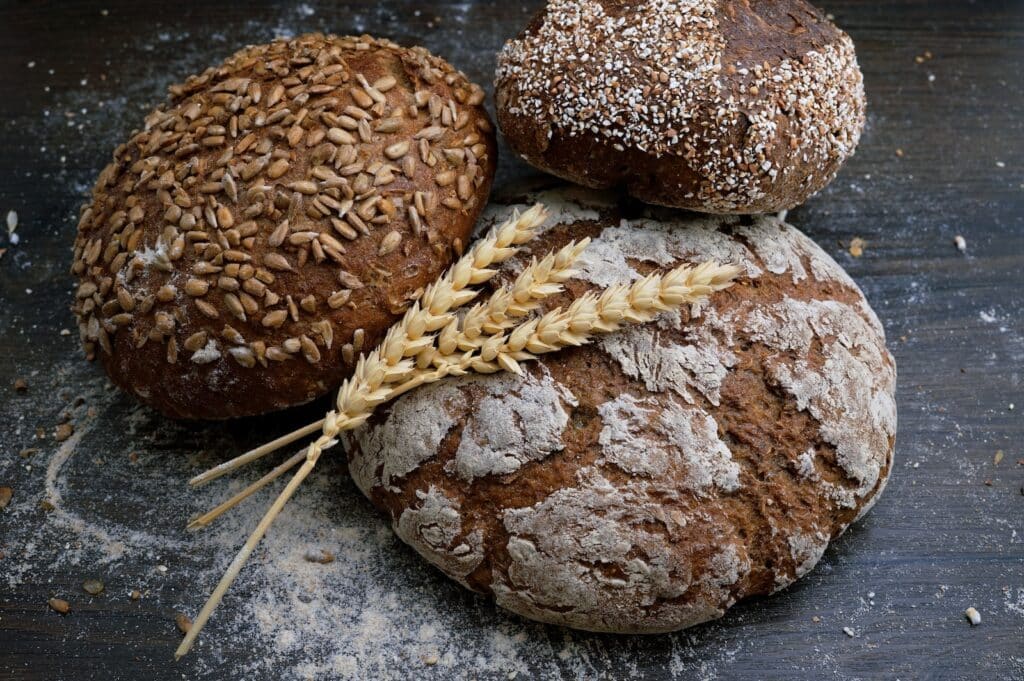
The exclusion of grains is one of the most distinctive features of the Paleo diet. Here’s why these particular grains are typically avoided:
- Wheat
- Why it’s excluded: Contains gluten, a protein that can cause digestive problems for many people. Additionally, modern wheat has been selectively bred for increased yield and gluten content, making it different from ancient varieties.
- Common foods containing wheat: Bread, pasta, cereals, crackers, pastries, and many processed foods.
- Rice
- Why it’s excluded: Considered a grain, and while it’s gluten-free, it can still cause blood sugar spikes due to its carbohydrate content.
- Common foods containing rice: White rice, brown rice, rice cakes, rice flour-based products.
- Barley
- Why it’s excluded: Contains gluten and can be problematic for those with gluten sensitivity or celiac disease.
- Common foods containing barley: Some breads, soups, stews, beer.
- Oats
- Why it’s excluded: While oats themselves don’t contain gluten, they are often processed in facilities that handle gluten-containing grains, leading to cross-contamination. They’re also a grain, which doesn’t align with the Paleo philosophy.
- Common foods containing oats: Oatmeal, granola, some cereals.
- Corn
- Why it’s excluded: Classified as a grain, not a vegetable. High in carbohydrates and can be genetically modified. Also contains phytic acid which can reduce nutrient absorption.
- Common foods containing corn: Tortillas, cornbread, polenta, many processed foods as corn syrup or high fructose corn syrup.
- Rye
- Why it’s excluded: Contains gluten, similar to wheat and barley.
- Common foods containing rye: Rye bread, some whiskies.
- Bulgar
- Why it’s excluded: Made from cracked wheat and, as such, contains gluten.
- Common foods containing bulgar: Tabouli salad, some cereals.
- Quinoa
- Why it’s debated: Quinoa is technically a seed, not a grain. However, its nutritional profile is similar to grains, leading to its debated status in the Paleo community. While it’s gluten-free, it does contain saponins, which can be irritating to the gut.
- Common foods containing quinoa: Quinoa salads, some cereals, bread made from quinoa flour.
For Paleo followers, avoiding grains is essential because of the belief that these foods weren’t a significant part of our ancestors’ diets and might pose health challenges when consumed in the large quantities seen in modern diets.
2. Legumes

Legumes are a group of foods that, while rich in protein and fiber, are typically excluded from the Paleo diet due to their content of certain compounds that can interfere with nutrient absorption and digestion. Here’s a breakdown of the most common legumes and why they are avoided:
- Beans (black, pinto, kidney, etc.)
- Why they’re excluded: Beans contain lectins and phytic acid. Lectins can be hard to digest and may lead to gut irritation for some people. Phytic acid can interfere with the absorption of essential minerals like calcium, magnesium, and iron.
- Common foods containing beans: Chilis, stews, bean salads, refried beans, and many Latin, Indian, and Mediterranean dishes.
- Peanuts
- Why they’re excluded: Contrary to popular belief, peanuts are legumes, not nuts. They contain lectins and can be a source of aflatoxins, a type of mold that can be harmful in large quantities.
- Common foods containing peanuts: Peanut butter, peanut sauces, candies, and many snacks.
- Peas
- Why they’re excluded: While they’re among the less problematic legumes, peas are still excluded because they contain antinutrients, albeit in smaller amounts than other legumes.
- Common foods containing peas: Split pea soup, various stews, salads, and some Indian dishes.
- Lentils
- Why they’re excluded: Similar to beans, lentils contain lectins and phytic acid, which can be problematic for digestion and nutrient absorption.
- Common foods containing lentils: Lentil soup, dals (Indian lentil dishes), and lentil salads.
- Soy products
- Why they’re excluded: Soy contains phytoestrogens, which can mimic the hormone estrogen in the body and potentially disrupt hormone balance. Additionally, soy has antinutrients like lectins and phytic acid. There’s also concern over GMO soy products, which are common in today’s food supply.
- Common foods containing soy: Tofu, tempeh, soy milk, soy sauce, edamame, and a wide range of processed foods as soy lecithin or soy protein isolate.
While legumes have been a staple in many cultures for centuries, the Paleo diet’s philosophy is rooted in the belief that they weren’t a primary food source for our Paleolithic ancestors and that they can present challenges for modern humans when consumed in large amounts or without proper preparation. However, it’s worth noting that many traditional cultures have methods of preparing legumes (like soaking or fermenting) that reduce their antinutrient content.
3. Dairy

Dairy products, while being a primary food source for many cultures worldwide, are generally excluded from the Paleo diet. The reasons for this are worries about lactose intolerance, the presence of modern additives and hormones in dairy products, and the notion that pasteurized dairy is significantly different from the raw milk that early humans consumed.
- Milk
- Why it’s excluded: The primary concern with milk is lactose, a sugar present in dairy products. Many adults, especially those of non-European descent, are lactose intolerant, which means they lack the enzyme lactase needed to digest lactose. Undigested lactose in the gut can lead to bloating, gas, diarrhea, and other digestive issues. Additionally, modern milk might contain hormones and antibiotics.
- Common foods/drinks containing milk: Cereals, coffee, tea, baked goods, sauces, and many processed foods.
- Cheese
- Why it’s excluded: While cheese has less lactose than milk, it still contains casein, a milk protein that some people find problematic. Additionally, many commercially produced cheeses might have additives and are made from the milk of grain-fed cows, which can alter the nutritional profile of the cheese.
- Common foods containing cheese: Pizzas, sandwiches, salads, and many snacks.
- Yogurt
- Why it’s excluded: Like cheese, yogurt contains casein. However, the fermentation process does reduce lactose content. Despite this, it’s still avoided by strict Paleo followers, especially if it’s made from the milk of grain-fed cows or contains added sugars and artificial ingredients.
- Common foods/drinks containing yogurt: Smoothies, parfaits, some sauces, and dressings.
- Ice cream
- Why it’s excluded: Most commercial ice creams are high in sugar and often contain artificial flavors, colorants, and preservatives. Additionally, ice cream is dairy-based, making it non-compliant with the Paleo diet.
- Common foods/drinks containing ice cream: Desserts, milkshakes, and floats.
- Butter
- Why it’s debated: Butter, especially when sourced from grass-fed cows, is rich in beneficial fatty acids like conjugated linoleic acid (CLA) and omega-3s. Ghee, which is clarified butter with the milk solids removed, is often considered even more Paleo-friendly since it lacks lactose and casein. Some Paleo followers include grass-fed butter or ghee in their diet because of these nutritional benefits.
- Common foods containing butter: Baked goods, sautéed or roasted foods, and many sauces.
While dairy is excluded in the Paleo diet, it’s worth noting that some versions of the diet, like the Primal diet, are more lenient with high-quality dairy sources, especially those that are fermented or come from grass-fed animals. The inclusion or exclusion of dairy often comes down to individual tolerance and preference.
4. Processed Foods & Sugars

Processed foods and sugars, which have become staples in the modern diet, are categorically eliminated in the Paleo diet. This exclusion is rooted in concerns over the impact of these foods on health, including weight gain, metabolic disruption, and chronic diseases.
- Candy
- Why it’s excluded: Candies are typically loaded with refined sugars, artificial colorants, and other additives. High sugar intake is linked to numerous health issues, including obesity, type 2 diabetes, and dental problems.
- Common types: Chocolate bars, gummy bears, hard candies, toffees, licorice.
- Processed snacks
- Why it’s excluded: Many processed snacks are made with non-Paleo ingredients like grains and legumes. They often contain unhealthy fats, artificial flavorings, preservatives, and excessive salt. These components can contribute to inflammation, high blood pressure, and other health concerns.
- Common types: Chips, pretzels, popcorn, cereal bars, crackers.
- Artificial sweeteners
- Why it’s excluded: While artificial sweeteners provide sweetness without calories, they can have negative effects on metabolism, gut health, and appetite regulation. Some studies also suggest potential links to various health issues, although research is ongoing.
- Common types: Aspartame, saccharin, sucralose, acesulfame potassium.
- Sodas
- Why it’s excluded: Sodas, both regular and diet, are high in either refined sugars or artificial sweeteners. Regular sodas can lead to rapid spikes in blood sugar, while diet sodas contain chemicals and sweeteners that might affect metabolism and appetite.
- Common types: Cola, root beer, ginger ale, tonic water, diet sodas.
- Baked goods made with refined flours and sugars
- Why it’s excluded: These baked goods lack the nutrients found in whole-food ingredients and are dense in empty calories. Refined flours have a high glycemic index, which means they can cause rapid spikes in blood sugar. Additionally, they often contain unhealthy fats and additives.
- Common types: Pastries, muffins, cookies, pies, cakes.
By excluding processed foods and sugars, the Paleo diet seeks to eliminate many of the dietary components most associated with modern chronic diseases. It advocates for a return to whole, nutrient-dense foods that provide sustained energy and support overall health.
5. Certain Oils

In the Paleo diet, the focus isn’t just on excluding certain food groups but also on promoting the consumption of healthier, more natural fats. Many of the commonly used oils in modern cooking and food processing are extracted from grains or seeds that are not considered Paleo-friendly. Here’s why some of these oils are typically avoided:
- Canola oil
- Why it’s excluded: Derived from rapeseeds, canola oil often undergoes a refining process using chemicals and high heat. Moreover, a significant portion of commercially available canola oil comes from genetically modified (GM) crops.
- Common uses: Frying, baking, in salad dressings, and many processed foods.
- Soybean oil
- Why it’s excluded: Extracted from soybeans, this oil is high in omega-6 fatty acids, which, when consumed in excessive amounts relative to omega-3 fatty acids, can promote inflammation in the body. Like canola, a large portion of soybean oil comes from GM crops.
- Common uses: Margarine, dressings, baked goods, and other processed foods.
- Sunflower oil
- Why it’s excluded: While sunflower oil is not necessarily harmful in small amounts, it’s also high in omega-6 fatty acids. Constant use without balancing with omega-3 sources can contribute to an inflammatory state in the body.
- Common uses: Frying, in some margarines, and processed foods.
- Corn oil
- Why it’s excluded: Extracted from corn kernels, corn oil is rich in omega-6 fatty acids. Additionally, most corn oil is derived from GM corn. The high omega-6 content can be problematic when not balanced with omega-3 intake.
- Common uses: Frying, margarine, and in many processed foods.
- Grapeseed oil
- Why it’s excluded: Grapeseed oil is another oil that’s high in omega-6 fatty acids. It’s often extracted using chemical solvents, and there are concerns about its potential oxidation when exposed to high heat.
- Common uses: Cooking, salad dressings, and some cosmetics.
The Paleo diet encourages the consumption of oils and fats that are either derived from sources that our ancestors were more likely to consume or have a more balanced omega-3 to omega-6 ratio. Examples of Paleo-friendly fats include coconut oil, olive oil, avocado oil, and animal fats from grass-fed or wild-caught sources.
6. Processed and Factory-farmed Meats
While meat consumption is encouraged in the Paleo diet, not all meats are created equal. Processed and factory-farmed meats are generally avoided due to concerns about additives, hormones, antibiotics, and the nutritional profile of the meat.
- Processed sausages
- Why they’re excluded: Many commercial sausages contain fillers made from grains, as well as preservatives, artificial flavors, and excessive salt.
- Common types: Breakfast sausages, bratwurst, and many flavored sausages found in supermarkets.
- Bacon with additives
- Why it’s excluded: While bacon can be part of a Paleo diet, many commercial brands contain added sugars, nitrates, nitrites, and other preservatives.
- Common uses: Breakfast dishes, salads, and sandwiches.
- Deli meats with preservatives and fillers
- Why they’re excluded: Many deli or processed meats contain grain-based fillers, sugars, artificial flavors, and preservatives. They can also be high in sodium.
- Common types: Ham, turkey, roast beef, bologna, salami.
7. Alcohol

While some argue that alcohol in moderation can be part of a healthy diet, it’s generally minimized or avoided in the Paleo diet due to its potential to disrupt digestion, promote inflammation, and contribute to various health issues.
- Especially in excess or those made from grains
- Why it’s excluded: Many alcohols, especially beers, are made from grains which are not Paleo-friendly. Moreover, excessive alcohol consumption can harm the liver, disrupt gut health, and impair judgment.
- Common types: Beer, certain whiskies, and many flavored liquors.
8. Some Beverages
Many beverages consumed in the modern diet are loaded with sugars, artificial ingredients, and other non-Paleo components.
- Non-natural fruit juices
- Why they’re excluded: While fruit is Paleo-friendly, many commercial fruit juices are stripped of their natural fiber and are loaded with added sugars or preservatives.
- Common types: Apple juice, orange juice, fruit punch.
- Dairy-based drinks
- Why they’re excluded: These beverages contain dairy, which is excluded from the Paleo diet, and often have added sugars or artificial flavors.
- Common types: Milkshakes, lattes, some smoothies.
- Sugary beverages
- Why they’re excluded: Drinks high in refined sugars can lead to rapid spikes in blood sugar, promote weight gain, and increase the risk of metabolic disorders.
- Common types: Soda, energy drinks, sweetened iced teas.
Exceptions and Grey Areas
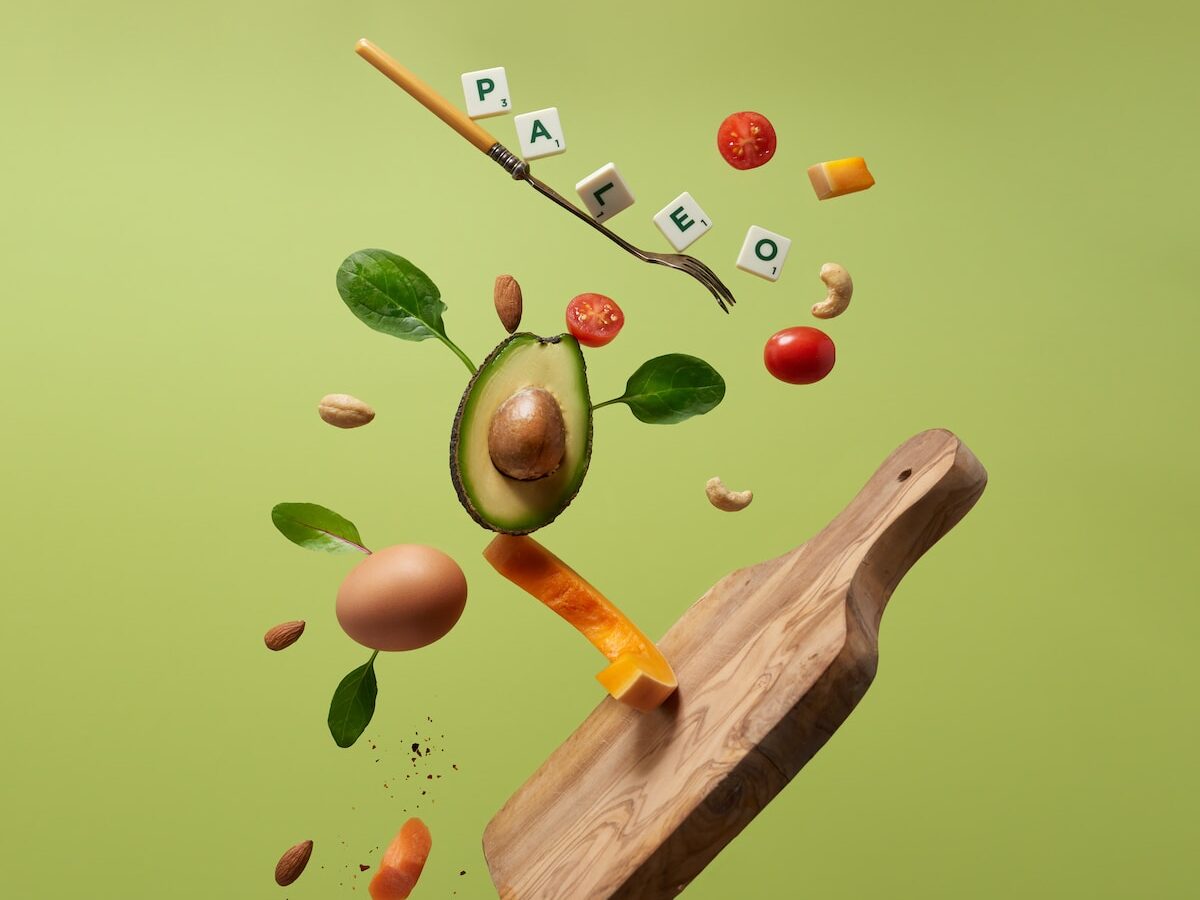
The Paleo diet, while rooted in ancestral eating habits, is not a strict doctrine. Instead, it’s a framework that can be adapted based on personal needs, preferences, and the evolving understanding of nutrition.
Discussion on how the Paleo diet can vary between individuals
- Personal tolerance: While dairy, legumes, and certain grains are generally excluded, some individuals might find they can tolerate small amounts without adverse effects.
- Ethnic and genetic factors: Some populations may have adapted over time to digest certain foods better than others, such as lactose tolerance among some European groups.
- Activity levels: Athletes or highly active individuals might incorporate more carbs or certain non-Paleo foods for energy and performance.
- Health conditions: People with specific health issues might need to modify the diet. For instance, someone with an autoimmune condition might exclude nightshades, even though they’re generally Paleo-friendly.
Evolution and modern adaptation of the diet
- Emerging research: As nutrition science advances, our understanding of what constitutes a ‘healthy’ diet evolves. Some foods previously considered non-Paleo might find a place in modern adaptations of the diet.
- Inclusion of some “modern” foods: Over time, some members of the Paleo community have accepted certain foods that were not available to our ancestors, such as high-fat dairy and particular sweeteners like stevia, because they believe they offer health benefits or are superior to conventional processed foods.
- Environmental and ethical considerations: Some followers adapt the diet to be more sustainable or ethically sourced, prioritizing local produce or plant-based alternatives over imported or factory-farmed foods.
Importance of individual dietary needs and personal adjustments
- Listening to one’s body: The most crucial aspect of any diet is how it makes an individual feel. It’s essential to monitor energy levels, digestion, mood, and other indicators of well-being and adjust accordingly.
- Consulting professionals: Working with a nutritionist or healthcare provider can help tailor the Paleo diet to an individual’s specific needs, ensuring all nutrient requirements are met.
- Flexibility over rigidity: While the Paleo framework offers guidelines, it’s not a one-size-fits-all approach. Finding a balance that aligns with one’s health goals, lifestyle, and personal beliefs is paramount.
While the Paleo diet offers a set of guidelines rooted in ancestral nutrition, it’s not a rigid system. It allows for personal adaptation and recognizes that individual needs can vary. By understanding the core principles and the reasons behind them, individuals can make informed choices and adjustments that best suit their unique circumstances.
Conclusion
As we reflect on the Paleo diet and its guidelines, it’s essential to remember that the path to optimal health is personal and often requires a combination of self-awareness, experimentation, and knowledge.
Every individual’s body is unique, with its sensitivities, tolerances, and needs. The most effective dietary approach will always be one that resonates with an individual’s physical and emotional well-being. This includes paying attention to how certain foods make you feel, noting any changes in energy levels, digestion, mood, and overall health. By listening to your body’s signals, you can make adjustments that best align with your wellness goals.
While the Paleo diet offers a solid foundation based on evolutionary history, it is not the definitive answer for everyone. It’s essential to stay informed, keep an open mind, and be willing to experiment. Trying different foods, noting reactions, and even occasionally reintroducing excluded foods can help individuals determine what truly works best for them. Remember, the journey to finding the right dietary balance is a personal one, and it’s okay to modify the approach based on your findings and experiences.
At its core, the Paleo diet’s philosophy is about returning to a way of eating that’s closer to how our ancestors ate—focusing on whole, unprocessed foods that nourish the body. Whether or not one chooses to follow the Paleo diet to the letter, its emphasis on whole foods, lean proteins, healthy fats, and fresh fruits and vegetables is universally beneficial. This approach seeks to reduce the intake of processed foods, artificial additives, and other modern dietary pitfalls, aiming for a healthier, more balanced life.
In wrapping up, it’s not about adhering strictly to a set of rules but about discovering the diet that brings out the best in you. The Paleo diet serves as a guide, a starting point in your journey towards optimal health. Embrace the journey, trust your body’s wisdom, and remember that the goal is long-term wellness and vitality.
